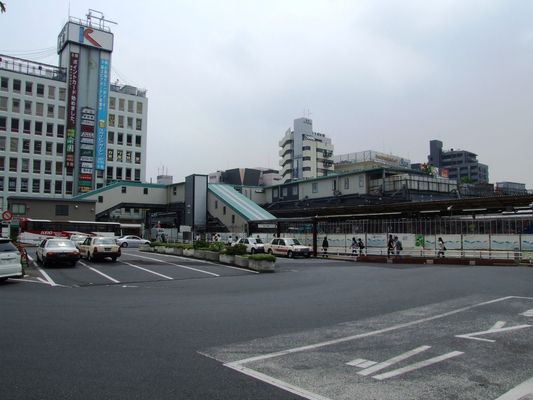This small Japanese city preserves authentic Edo-period merchant houses with black-tiled roofs. Its narrow streets, traditional sweet shops, and 500-year-old bell tower tell stories of old Japan.
A 45-minute train ride from central Tokyo brings you to Kawagoe, where merchants of the 1800s built two-story clay warehouses along the main street. As you walk through the city, you'll hear the Bell Tower's chimes, taste sweet potato ice cream in century-old candy shops, and see 500 unique Buddha statues at Kitain Temple. The clay warehouses that gave the city its "Little Edo" nickname still function as shops and restaurants today, their thick walls and tiled roofs unchanged since the merchant town era.
Getting to Kawagoe from Tokyo
Take the Seibu Shinjuku Express from Seibu Shinjuku Station to Hon-Kawagoe Station in about 45 minutes. You'll find the station five minutes away from JR Shinjuku Station's east exit. Another option is to travel from Ikebukuro Station, which connects to Hon-Kawagoe Station through multiple rail lines. When you arrive in Kawagoe, you can reach most sites on foot, with the main attractions concentrated within a 20-minute walking radius.
The Historic Warehouse District
Clay warehouses called kurazukuri line the main street, built in the late 1800s after a fire destroyed much of the town. These two-story buildings have walls up to one meter thick and heavy tiled roofs that protected merchants' goods from fires. At the district's center, the 16-meter wooden Bell Tower (Toki no Kane) rings four times daily at 6am, 12pm, 3pm, and 6pm, continuing a tradition that began in the 1600s.
Traditional Sweets in Candy Street
Walk down Kashiya Yokocho (Candy Street) to find about 20 traditional candy shops in a stone-paved alley. During the Edo period, 70 shops operated here. Today's shopkeepers make rice crackers, hard candies, and sweet potato treats using copper pots and wooden molds. You'll see candy makers pulling taffy by hand and roasting sweet potatoes in stone ovens, continuing the city's long history of sweet potato cultivation.
Exploring Kitain Temple
At Kitain Temple, you can walk among 500 stone Buddha statues, each with its own personality - from laughing to contemplating to sleeping. The temple holds special significance as home to several original Edo Castle buildings. In the 1600s, Shogun Tokugawa Iemitsu ordered these structures moved here piece by piece. Today, they remain the only surviving buildings from the original castle complex.
Taisho-Roman Street Architecture
The early 20th-century buildings along this street reflect Japan's 1912-1926 Taisho period. With no overhead power lines to interrupt the view, you'll see how Japanese builders incorporated Western elements like glass windows and brick walls into traditional designs. Many Japanese period dramas film here to capture the authentic 1920s atmosphere.
Kawagoe Festival and Seasonal Events
Visit during the third weekend of October to see the city's main festival, when teams of musicians and puppeteers perform on decorated floats through the streets. The floats gather in the warehouse district after dark for evening performances. Spring brings cherry blossoms along the Shingashi River banks, while maple and ginkgo trees on temple grounds turn red and gold in autumn.










![An overview of Hiroshima, Japan, and the Hiroshima Memorial Peace Park - commemorating the 1945 atomic bombing of the city - as seen from a hotel rooftop on April 11, 2016, as U.S. Secretary of State John Kerry visited the city to attend the G7 Ministerial Meetings. [State Department photo/ Public Domain] | Hiroshima in Japan](https://humbo.s3.eu-north-1.amazonaws.com/place-photo/5ff8b36b9a7cce494339cc9b/ldnAp_Ep6I_thumb.jpeg)







